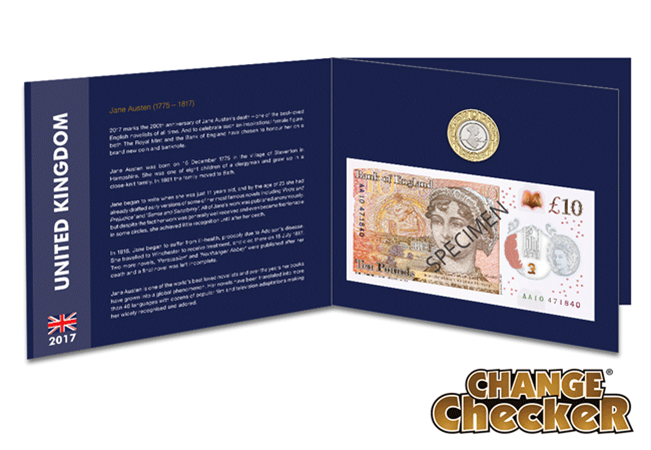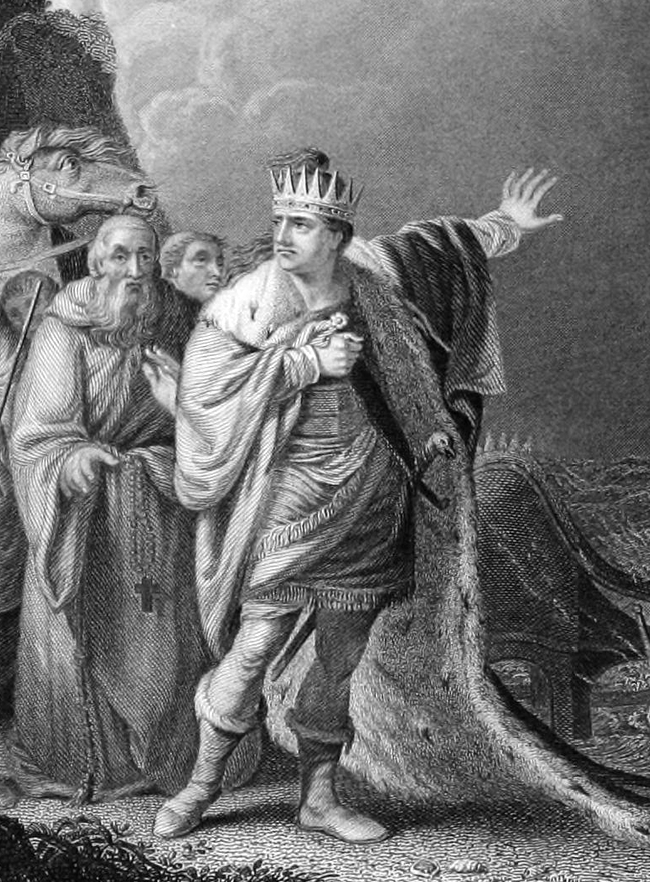Pride without prejudice – how Jane Austen came to appear on our coins and banknotes in 2017.
2017 marks 200 years since the death of Jane Austen – one of the best-loved English novelists of all time. And to celebrate such an inspirational female figure, both The Royal Mint and the Bank of England chose to honour her on a brand new coin and banknote.
People power wins
Back in May 2013, a petition to ‘keep a woman on English banknotes’ gained momentum. Over 35,000 people signed the petition after it was announced that Winston Churchill would replace social reformer Elizabeth Fry as the face of the £5 note in 2016. At the time this meant that other than the Queen, there would be no women featuring on English banknotes.
However, people power won as Jane Austen became the new face of the polymer £10 note in 2017, replacing Charles Darwin.
It is thought that Jane Austen was already part of the Bank’s plans for the next new note as in a statement the Bank said it was “never the Bank’s intention” that none of the four characters on banknotes would be a woman.
The Bank of England have featured characters on their banknotes since 1970 to celebrate individuals that have shaped British thought, innovation, leadership, values and society.
Jane Austen is the 17th historical figure to feature on a Bank of England note.
So not only does Jane Austen feature on the new £10 note, The Royal Mint also feature this inspirational author on the new 2017 £2 coin. Designed by Dominique Evans, the new £2 features a silhouette of Jane Austen with the dates 1817-2017.
The £2 coin issued by The Royal Mint has been struck to mark the 200th anniversary of the death of Jane Austen, one of the best-loved English novelists.
This was the first time ever that someone featured on a circulation coin and banknote at the same time – other than the reigning monarch.
A tiny portrait of Jane Austen also appears on four of the new polymer £5 notes as a microscopic engraving produced by Specialist micro-engraver Graham Short. The collector’s items are said to be worth over £20,000 each!
Own the 2017 Jane Austen £2 Coin and £10 Banknote Pack
This is your opportunity to receive one of the very first Polymer £10 notes issued in perfect mint condition alongside the 2017 Jane Austen £2 Coin issued by The Royal Mint.
A work of art – Latvia’s innovative ‘Earth’ Coin
Latvia has issued an innovative new coin. So unique in fact, it is considered a work of art.
Not only is the design beautiful, from a technological point of view, it is hard to fault; mainly because the coin is translucent.
The ‘Earth’ coin has been made from translucent perlucor, a ceramic material that is used in laser, military and medical equipment engineering among other things.
The symbolic ‘jewel-like’ Earth at the centre of the coin is enclosed by a transparent veil that represents the Universe. The planet earth is floating in the middle and the perlucor is enclosed by an outer silver ring which holds everything in place.
Designed by architect M. Kalninš, his original idea of a translucent coin came out as top winner at the Latvian Bank’s competition of innovative euro coins in 2015. Struck by the Lithuanian Mint, the coin is enjoying high demand from the numismatic community for its unique design which is viewed as a work of art.
However, if you want one, they are only available to purchase at the Bank of Latvia Cashier’s Office for 85 Euros. The number of coins available has been limited to a maximum of 5,000 so you ought to be quick.
Who was King Canute and why is he on the new UK £5?
Today marks 1,000 years since the coronation of King Canute and to mark the anniversary, The Royal Mint have issued a brand new UK £5 coin. But who was King Canute?

The Royal Mint have issued this brand new UK £5 coin to celebrate the 1,000th anniversary of the coronation of King Canute
Hailed the ‘king of all England’
50 years before the Norman Invasion of 1066, Canute crossed the North Sea and won the throne of England.
Recognised as one of the most prominent kings of the Anglo-Saxon era, Canute is widely remembered for conquering kingdoms across northern Europe including England, Denmark, Norway, and areas of Sweden.
Born in Denmark, King Canute’s exact birth year is unknown, although it is thought to be between 985–995 AD. Canute grew up at a time when the crown of England was being ferociously fought over by the Anglo-Saxons and the Vikings.
Canute became the undisputed successor to the English throne in 1016 after months of warfare between Canute and Edmund Ironside (son of Æthelred ‘The Unready’) and his coronation took place on the 6th January 1017 at the Old St Paul’s cathedral.
Canute or Cnut the Great?
Canute was originally known as Knútr (which means ‘Knot’) in Old Norse and in Denmark he is still known as Knud den Store (‘Cnut the Great’).
Anglo-Saxons rarely used the letter K and the letter combination ‘CN’ was quite normal in Old English, so his name was spelt CNUT in the Anglo-Saxon Chronicle and, importantly, on coins issued in his name in England and Denmark.
Later medieval writers turned this into ‘Canutus’ which became the spelling ‘Canute’, often seen in modern English as a more familiar modern day spelling.
A historical coin
King Canute’s achievements and influence paved the way for the nation we recognise today. He strengthened the currency, initiating a series of coins of equal weight to those being used in Denmark, so it’s only fitting that the design of this brand new £5 coin has been inspired by the original currency of King Canute.
This is the first time ever The Royal Mint has commemorated a 1,000-year anniversary on a coin – an occasion of real significance.
Own Britain’s new £5 coin – the first release of 2017
Today you can own the brand new 2017 UK £5 coin issued to mark the 1,000th anniversary of the coronation of King Canute – an anniversary never before celebrated on a UK coin.






